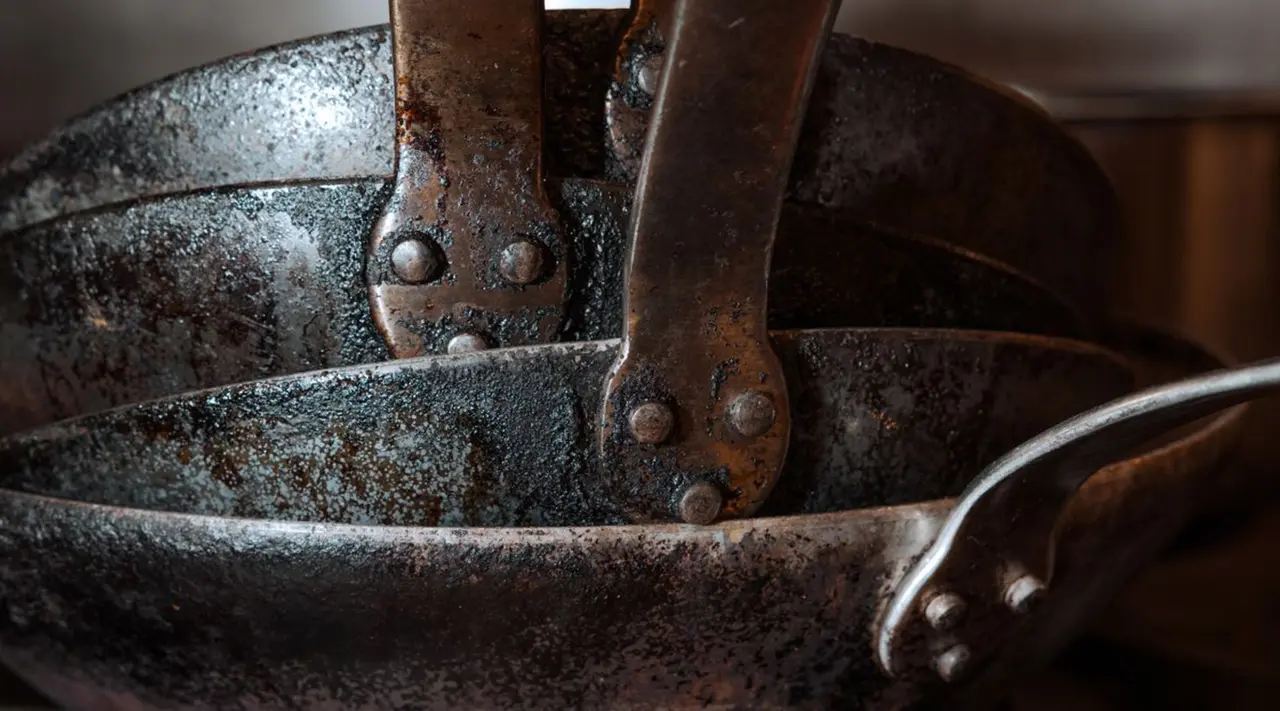You may have seen a long metal or ceramic rod included in a knife block or in the hands of a professional chef as they sharpen their knives. This tool is called a honing steel, honing rod, or sharpening steel, and it's used to hone knife blades—not sharpen them. There’s a difference, we promise.
Honing and sharpening are similar in that they’re both techniques used to maintain the edge of your kitchen knives, but their practice and purposes are fairly different. Here's what you need to know to keep your knives in fighting shape.
Understanding Knife Honing

During the course of putting normal wear and tear on a knife, your blade will eventually start to microscopic develop dings and dents—small enough that you can’t see them with the naked eye. While a couple of these dents are indicative that your knife is well-loved and getting used regularly, too many dings or dents these can actually misalign your blade, preventing your knife from cutting properly.
Another way of thinking of this is that knives have microscopic “teeth” that make up the blade, which will naturally get bent out of shape while cutting and slicing. This is a completely normal issue that happens with knives of any caliber, and honing helps to realign those “teeth”.
All that to say, the process of honing a knife on a honing rod realigns the edge of your blade and smooths out any dents or damage to create a newly smooth micro-bevel along the edge. This gives your knife a newly sharp feeling and improves its performance. Unlike sharpening, honing can be done regularly—as often as every time you use your knife or as infrequently as whenever you remember every few months.
Understanding Knife Sharpening
Knife sharpening is the process of using a sharpening stone (also called a whetstone) or electric knife sharpener to remove steel from a dull knife blade. This creates a newly revealed, sharp edge to make cutting easier. In other words, you are filing the blade down and removing a layer of dull steel in order to make it sharper.
Sharpening should be done much less frequently than honing—once every 6 months to a year is generally enough for knives in a home kitchen.
When to Hone and When to Sharpen Your Knives

“When you think you need to sharpen, you probably just need to hone it on a steel. I would do that first,” says Sergio Menchaca of Texas Sage Forge. “When you sharpen, you’re actually removing some of that steel. Honing just realigns it.”
The old adage rings true: dull knives are dangerous ones. This is because dull knives require more pressure to cut, which can increase the chance that the knife can slip and injure you. Sharper knives are actually safer to use than dull ones, as a sharp knife can pierce the surface with less pressure needed.
A good rule of thumb is properly cared for knives should be regularly honed and less frequently sharpened. Since sharpening removes metal from the edge of your knives, we recommend sharpenings only when honing no longer seems to restore a blade's sharp edge.
Sharpness Tests
You can test your blades’ sharpness by slicing through a tomato or a piece of paper while holding it in the air (but be mindful of your fingers!). A sharp knife will cut right through the paper and slice through the tomato's delicate skin with such little pressure that the fruit won't be squashed or damaged.
If your knife is dull and doesn’t pass either of those tests, it’s likely beyond honing and time to sharpen.
Additional Kitchen Knife Care Tips

When you invest in a quality set of kitchen knives, it's important to protect and care for them. Here are some maintenance tips to prolong the lifespan of your knives.
- Find the best sharpening technique: Before sharpening your blades, look into different knife sharpeners, including electric sharpeners, manual sharpeners, and whetstones, to determine the best choice for your blades. While electric is the fastest, using a whetstone is the best option for more expensive knives (and the one we recommend for our Knives). If you prefer, you can have them professionally sharpened instead.
- Store knives correctly: Proper knife storage keeps blades sharp and fingers safe. We recommend storing in the sheaths they come in or opting for either our Knife Block or in-drawer Knife Organizer for easy access.
- Use knives on correct surfaces: Knives should never be used on top of hard, abrasive surfaces, like your kitchen countertop, as this will damage their blades. “If you’re using a stone cutting board especially, or a surface that’s really hard, your knife is going to dull a lot quicker,” says Menchaca. To protect your knives, use them on knife-safe surfaces, like wooden or plastic cutting boards.
- Wash knives after use: To preserve the beauty and integrity of your knives, care for them properly. This includes skipping the dishwasher, hand washing with mild soap and water, and drying immediately after use.
Ready to Shop?
With proper care, honing, and sharpening, a high-quality knife can last you a lifetime. Shop any of our full-tang, fully-forged, French-made knives and see the difference a quality knife can make in your cooking routine.
Our Honing Steel features hard-wearing Tungsten steel, a built-in angle guide for 15- and 20-degrees, and a comfortable POM handle (that's a perfect match to the handles in our Truffle Black Collection), all to keep each piece in your knife collection perfectly aligned and ready to cut.































